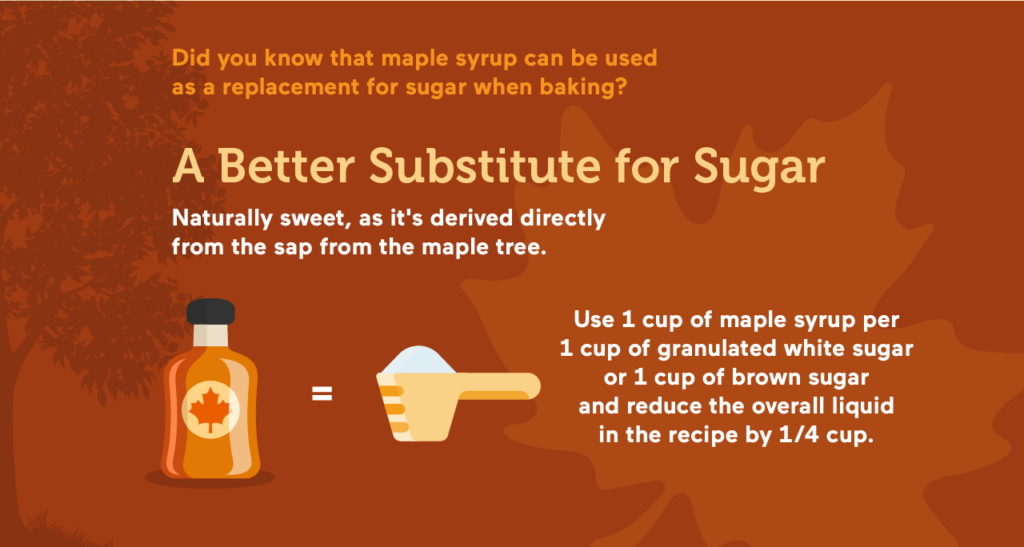Sugar Alternative
Pure Canadian maple syrup can be used as an alternative to sugar in a variety of dishes, such as desserts and baked goods (pies and cakes, just to name a few). The natural sweetener also adds depth and complexity to a wide range of entrees, and can be used as an ingredient in glazes, rubs or barbecue sauces for poultry, meat, seafood or vegetables.
How to substitute maple for sugar
For most recipes, maple syrup can easily be used to replace an equal amount of granulated white or brown sugar. To substitute for a cup of sugar, replace it with 1 cup of maple syrup and reduce the quantity of other liquids in the recipe by ¼ cup (60 ml) total.

*This method works for most recipes. It may not, however, be suitable for pastry recipes that use large amounts of sugar.
Maple syrup can also serve as a one-to-one substitution for other liquid sweeteners, such as honey, molasses and corn syrup.
Pure maple syrup can also be used to
- Add a subtle sweetness and a hint of maple flavor to fresh fruit, cereal and ice cream.
- Sweeten tea, hot chocolate, coffee, eggnog and smoothies.
- Jazz up a cocktail, instead of simple syrup.
Nutritional Value
Pure maple syrup from Canada provides vitamins and minerals in a sweet package – at approximately 110 calories per serving (2 tablespoons).
Percentage Daily Value*, Per 2 tablespoon (30mL) Portion[i]
Manganese (excellent source with 35% DV)
Riboflavin (vitamin B2) (good source with 15% DV)
Copper (8% DV)
* The % Daily Value (DV) tells you how much a nutrient in a serving of food contributes to a daily diet. 2,000 calories a day is used for general nutrition advice.
Additionally, scientists have identified more than 67 different plant compounds, or polyphenols, nine of which are unique to pure maple syrup. One of these polyphenols, named Quebecol, naturally forms when the sap is boiled to produce maple syrup.[ii]
Read more about maple syrup’s nutritional benefits here.
[i] U.S. Department of Agriculture, Agricultural Research Service. FoodData Central, 2019. fdc.nal.usda.gov.
[ii] Li, L., & Seeram, N. P. (2011). Further investigation into maple syrup yields 3 new lignans, a new phenylpropanoid, and 26 other phytochemicals. Journal of agricultural and food chemistry, 59(14), 7708-7716.
